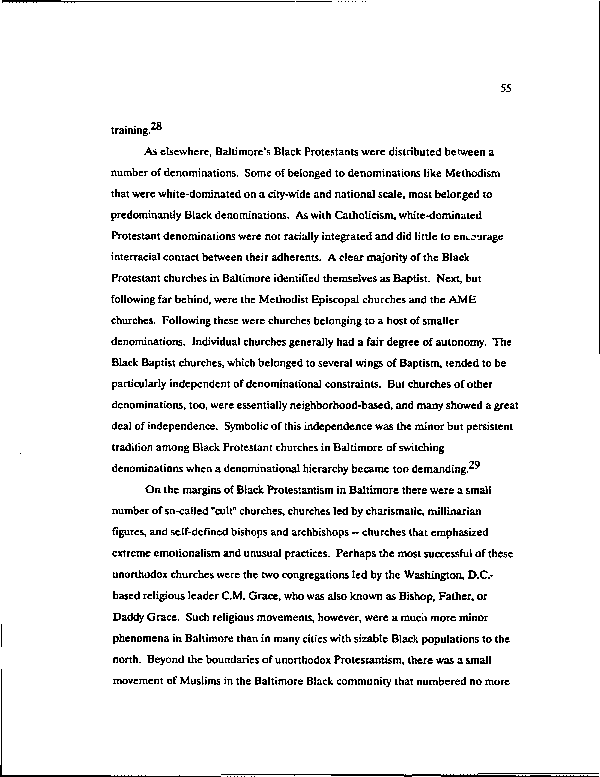|
55
• .
training/**
As elsewhere, Baltimore's Black Protestants were distributed between a
number of denominations. Some of belonged to denominations like Me thodism
that were white-dominated on a city-wide and national scale, most belonged to
predominantly Black denominations. As with Catholicism, white-dominated
Protestant denominations were not racially integrated and did little to encourage
interracial contact between their adherents. A clear majority of the Black
Protestant churches in Baltimore identified themselves as Baptist. Next, but
following far behind, were the Methodist Episcopal churches and the AME
churches. Following these were churches belonging to a host of smaller
denominations. Individual churches generally had a fair degree of autonomy. The
Black Baptist churches, which belonged to several wings of Baptism, tended to be
particularly independent of denominational constraints. But churches of other
denominations, too, were essentially neighborhood-based, and many showed a great
deal of independence. Symbolic of this independence was the minor but persistent
tradition among Black Protestant churches in Baltimore of switching
denominations when a denominational hierarchy became too demanding.2^
On the margins of Black Protestantism in Baltimore there were a small
number of so-called "cult" churches, churches led by charismatic, millinarian
figures, and self-defined bishops and archbishops — churches that emphasized
extreme emotionalism and unusual practices. Perhaps the most successful of these
unorthodox churches were the two congregations led by the Washington, D.C.-
based religious leader CM. Grace, who was also known as Bishop, Father, or
Daddy Grace. Such religious movements, however, were a much more minor
phenomena in Baltimore than in many cities with sizable Black populations to the
north. Beyond the boundaries of unorthodox Protestantism, there was a small
movement of Muslims in the Baltimore Black community that numbered no more
|

